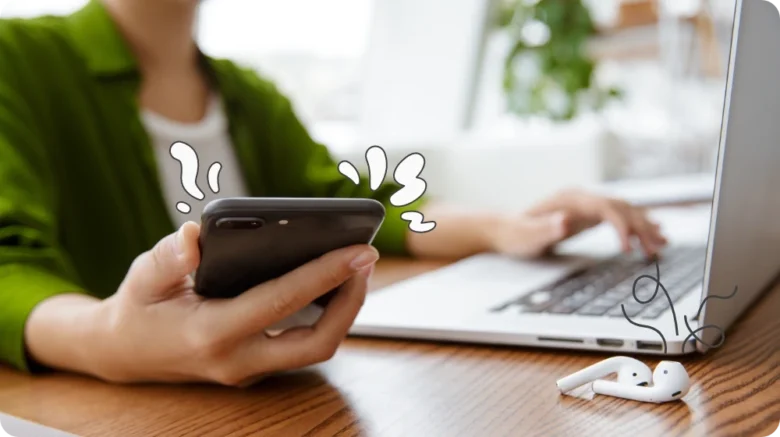In today’s fast-paced, digital world, we are more connected than ever. Our laptops, tablets, and phones offer endless opportunities for entertainment and communication. But have you ever considered how this constant connection can affect your mental health? Navigating the digital world can present both advantages and disadvantages.
On the other hand, it can cause anxiety, loneliness, and overwhelm. As we become increasingly reliant on screens to socialize and consume information, understanding digital well-being is essential to maintaining our mental health. Let’s explore the complex interplay between digital habits and emotional well-being. By studying how technology affects our emotions and relationships, we can gain insight into how we can create a better balance and improve our online experiences and overall well-being.
Understanding Digital Wellbeing
Digital well-being is about finding a balance between personal health and technology use. Such an endeavor requires us to think carefully about our digital interactions, not just about limiting screen time. The idea is to get people thinking about the impact of technology on their lives, both positively and negatively. Does technology help us be more productive, or does it make us scroll mindlessly?
To understand digital well-being, we need to realize that our mental health can be affected by our interactions with the internet. This got us thinking about some important questions: do social networking sites strengthen our relationships, or do they contribute to loneliness? Greater awareness of these issues helps us make informed decisions about our technology use. This leads to a more balanced life where emotional well-being and connectedness go hand in hand.
How Technology Affects Emotional Health
The development of technology has changed our lives in many ways. While it provides us with convenience, it also brings with it problems for our mental health. Too much screen time can lead to anxiety and loneliness. Many people scroll through their social media accounts and suddenly feel inferior or compare themselves to others. Prolonged exposure can destroy self-confidence and lead to unreasonable expectations.
The speed of information can also be overwhelming. Notifications flood our devices, demanding quick responses and causing stress. It’s easy to become addicted to technology; such habits can weaken actual relationships. Instead, technology tools like mindfulness apps offer mental health support. They promote activities like meditation that help manage stress levels. As we navigate the new obstacles and opportunities that technology offers, it’s increasingly important to find balance.
Approaches to Digital Health
Start by evaluating your current technology practices for digital well-being. Monitor your screen time and see when you feel most stressed. Then, prioritize activities that promote balance. Do physical activities or take up hobbies that help you get away from screens. Such actions can be both physically and mentally rejuvenating.
It’s also a beneficial idea to create a daily schedule. Set aside a certain amount of time each day to check social media and email so that you’re less likely to be distracted. Consider creating a “technology-free zone” in your home. Create spaces where electronic devices are banned so you can build more meaningful relationships with friends or family. Try some mindfulness apps that can help you be more mindful of your technology use. These tools can help people think about how digital engagement affects their emotional well-being.
Mindful Technology Use
Being mindful of technology means being careful with electronic devices. This encourages reflection on our digital habits. Instead of scrolling aimlessly, take a moment to think about the material you are consuming. Consider whether it is adding value or just a way to pass the time. This small change can lead to more meaningful interactions.
Doing one task at a time can help you focus and reduce stress. Instead of letting notifications rule your day, schedule specific times to check them. Create technology-free zones in your home, especially during mealtimes or before bed. These breaks give people the opportunity to relax and authentically communicate without interruptions. Using technology to practice mindfulness can help you understand how it affects your emotions and connections. Knowing when to disconnect from life around you and when to engage more with others can help you find balance.
Disconnect and Set Boundaries
To promote emotional well-being, we need to set boundaries around our use of technology. It’s easy to get addicted to constant alerts and changes. Such behavior can leave people feeling stressed, anxious, and stressed. Take time to unplug from your electronics. Create spaces in your home where you don’t use technology; use them for special activities like family time or meals. These small adjustments can make everyday life meaningful and thoughtful.
Unplugging is about focusing on your surroundings without distractions, not just turning off your phone. Take a walk, read a book, or spend some time with loved ones away from the screen. These moments give your mind a rest and help you develop closer relationships with yourself and others. Keeping these boundaries in mind can help you achieve emotional clarity and peace.
The Impact of Social Media on Emotional Health
Social media has both positive and negative effects on our emotional well-being. On the one hand, it connects us to distant friends and family. These tools create a support system that is encouraging and motivating. Conversely, endless exposure to chosen lives can lead to feelings of loneliness or inadequacy. Highlight videos sometimes change reality as they pass by. Comparing numbers can greatly affect our mental state.
Furthermore, connections on social media can be superficial. Quick likes and comments cannot replace deep personal conversations. The quality of our relationships is more than a number. It is crucial that we are aware of what we consume online. Interacting with good content improves our mood; getting rid of bad influences can help us maintain our attitude. In today’s hectic society, a balanced use of social media is essential to maintaining your emotional health.
Conclusion
It is imperative to find a balance between digital engagement and our well-being. It is about building a lifestyle that supports both our body and mind. When used with care, technology can transform our daily lives. Small changes can have a big impact, such as prioritizing in-person contact or setting specific times without technology.
Understanding how social media affects emotions can help us use these tools with caution. While unfollowing negativity can have a calming effect, curating a feed full of optimism can inspire others. Setting boundaries can help people save time and energy. Unplugging occasionally is not only refreshing; it is necessary for mental clarity. Finding balance requires constant attention and effort. By being mindful of technology, we can improve our mental health in our increasingly digital lives.
FAQs
1. How do you define digital health?
Digital well-being is closely linked to technology supporting overall physical, mental, and emotional health.
2. How does technology impact our emotional health?
Excessive use of technology can lead to increased anxiety, sadness, loneliness, or tension due to social comparison. It can also lead to poor sleep quality due to the many hours of screen time before bed.
3. How do we achieve digital health?
Strategies include scheduling specific time slots for gadget use, mindful content consumption, taking regular screen breaks, and using devices wisely while meditating or doing mindfulness exercises.




